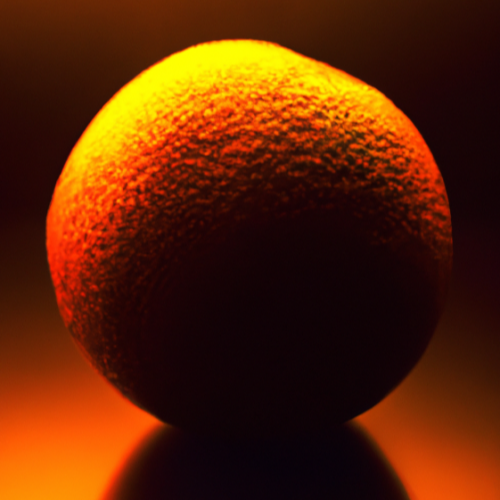Sales are growing so quickly that some installers wonder whether heat pumps could even wipe out the demand for new air conditioners in a few years and put a significant dent in the number of natural gas furnaces.
Just to share some climate change context, as of 2020, natural gas usage by buildings (mostly for heating) accounted for 54% of community-wide emissions in Toronto. Transportation only accounted for 33%, so reducing our use of natural gas for heating is something Canada needs majorly to focus on if we don’t want to burn.
To me, it’s absolutely crazy that AC units are even still marketed. An air conditioner is just a heat pump that only work in one direction (cooling). All that is needed to allow it to work for both heating and cooling is one extra valve. If you’re going to install a heat pump (in the form of an air conditioner) and a furnace anyway, you might as well let the heat pump provide heating as well. That way, your furnace is only required on the coldest nights. For most of the year, the heat pump is sufficient.
With the caveat that at lower outdoor temperatures (think below about -20C), heat pumps become increasingly ineffective at heating up indoor spaces.
For places that reach those temperatures in winter (most of the prairies and northern Ontario) you also need supplemental heating of some sort.
Well, everywhere in Canada outside of maybe Vancouver does dip deep below -20 once in a while. But for the “Quebec City to Windsor corridor” (which is where about half of Canada lives eg GTA) you theoretically should be able to get away with some electric space heaters as a backup heating source. They’d be expensive to run but it would likely only be for a few days per year.
They’d be expensive to run but it would likely only be for a few days per year.
“Pay for more electricity” might not work very well, if everybody in a region uses resistive heat at the same time. I’m not sure what the solution is… maybe an overprovisioned power grid, cheaper battery tech, or tanks of renewable backup fuel like dimethyl ether?
Local power storage.
If you’re home had a battery bank, it could slow-charge pretty much all the time, then help pick up large on-demand loads like heating/cooling (air, water, food, etc).
Then the power grid would see a relatively steady load from each home with the batteries smoothing out spikes in usage.
Add on local generation like solar or wind to further reduce that load on the grid.
Heat pumps often have the option of a heater strip that lets it work at those temperatures.
At what point is city wide infrastructure the answer?
Especially for hot water. Is it worth ripping up the roads and putting in hot water pipes or are we at the point in “electrify everything” that it’s actually cheaper to have individual appliances for everything.
I can’t help put think with hot water most is used in morning or at night. Seems like a huge storage tank that is filled at night and at peak solar is beneficial for the grid.
Hot water continuously radiates it’s heat into the environment around it. City wide hot water infrastructure would be hugely inefficient and impractical as that water would constantly have to circulate to and from homes to be re-heated and re-circulated.
Literally heating massive quantities of water; just to pump it out into essentially a field (of pipes), wait for it to cool, then pump it back and do it again.
Without that recirculation to keep hotwater immediately available at each home/tap; you’d be waiting hours for all the cooled off water to flush out of the pipes and be replaced with hot water, wasting all that water while you wait. (kinda like waiting on a typical hotwater tank, but x100)
Electric hot water on demand combined with green sources of electricity should be the goal.
Lots of countries have city hot water. It’s a simple concept. I don’t there there is that much heat wasted covering that many people in such a small area.
I just wondered about the economics. I think most of the current ones use waste heat from electricity generation
I live in one of those countries. Heat waste is a big problem, you can sometimes see where the heat pipes are because of melted snow above them. Many houses are poorly insulated as well and lose even more energy.
Central heating, as we call it, is infamous for being rather inflexible and often expensive. I used to pay up to 20% of my salary for heat during colder winters. I now live in an apartment building with its own soil-ethanol geothermal heating and my heating bills are 10% of what it used to be.
Many heating plants still burn oil products to make heat, and those are often expensive. There has been a big push to switch to locally produced biomass to cut costs.
It would be unwise to not have a backup heat source if you’re installing a heat pump in Canada. Some may claim their balance point is well into the -20s, but relying on a system that cannot provide adequate heat in extreme cold events could get rather dangerous.
As for the offsetting NG furnaces, it’s unlikely someone would remove the furnace when the heat pump can easily be installed in the air handler, in line with the furnace, and a ‘dual-fuel’ thermostat used to control the switch point.
Here in Saskatchewan, NG is also significantly cheaper than electricity. So, with our high heating demands, those who have access to NG often choose that. I have a heat pump and electric furnace backup, but I’m in a net-zero house designed for significantly lower energy use, which is definitely an outlier to the typical terribly designed homes built to minimum code.
It would be unwise to not have a backup heat source if you’re installing a heat pump in Canada.
As always, in all things, solicit advice from a pro. Conditions will vary wildly between Vancouver, Regina, StJohns and Sarnia.
I have 3 sources. Heat pump, oil furnace, and oven.
oven.
I was “use the oven to heat part of the house” kind of poor, once. ;-)
My new heat pump works perfectly fine down to -30C, but it’s a very new model. And for the few times a year it gets that bad, use a space heater.
the few times a year it gets that bad
Cries in Edmontonian
Every time the carbon tax goes up, the gap between electric and natural gas closes.
But heat pumps are much more efficient than electric heating and a much cheaper source of heat.
Unless you’re in Saskatchewan, where both utilities increase because we burn natural gas and coal for power.
Here in Saskatchewan, NG is also significantly cheaper than electricity. So, with our high heating demands, those who have access to NG often choose that.
It makes sense, because they burn gas to make the electricity. I understand a heat pump can create a lot more heat than just an element would, though, so it still comes out cheaper.
It would be unwise to not have a backup heat source if you’re installing a heat pump in Canada. Some may claim their balance point is well into the -20s, but relying on a system that cannot provide adequate heat in extreme cold events could get rather dangerous.
I hear there’s work being done to make more cold-resistant ones. For myself, I wonder about the ground-loop systems. They’re more expensive, but I don’t know by how much.
Running heat pump isn’t cheaper than NG in Saskatchewan. Natural gas is about 9x cheaper than electricity for the same amount of energy. A heat pump also doesn’t create heat, it only moves it. It can be over 300% efficient, but natural gas is still cheaper to heat the same space.
Ground loop (geothermal) is significantly more expensive to install and also needs to be designed properly or it will remove the available heat from the ground in just a decade.
needs to be designed properly or it will remove the available heat from the ground in just a decade.
Well, yeah, any HVAC system needs to be properly designed.
Not sure this should be downvoted, I’m guessing this guy knows his local prices, and the rest sounds right or just is right.
I don’t know why either. It’s part of my job to know these things, but I’m happy to reassess if anyone has information that contradicts what I’ve said.
For myself, I wonder about the ground-loop systems. They’re more expensive, but I don’t know by how much.
More expensive to install, and may not be possible in a normal city lot.
But there are situations when it is the sinning choice. My brother did a new house build on a rural property about 10 years ago and went with a ground source system (with supplemental electric heat for the coldest days in those cold Manitoba winters). The incremental cost was not that much, since the had the space for the outdoor loop, and had the construction equipment already on-site.
He is very happy with it.
Ground loops are a great choice if it is an option since the ground loop is often on the right side of the equation, cooler than air in the summer and warmer than air in the winter.
I mean you’re in SK, that’s kind of an extreme case. Most Canadians live in parts of the country with more moderate weather, where it only goes below -20 on the absolute coldest night of the year, if at all. I mean “backup” could just mean a couple of 1500 watt space heaters in the closet if you find the pump isn’t cutting it - yes you’ll burn through your heating bill but it’s going to be for maybe a couple of nights tops.
Ottawa has weeks at a time where it’s below -20? I think the GTA is similar. The past two winters here in NS we’ve had to have our baseboard heaters on in addition to our heat pumps multiple times through the winters because it was much colder than -20?
I mean you’re in SK, that’s kind of an extreme case. Most Canadians live in parts of the country with more moderate weather,
In Manitoba (which gets the same or worse winters as Sask) heat pumps can make sense.
But that’s because our electricity is much less expensive.
Yup. Hooray for plentiful hydro! I always think it’s funny how MB gets grouped into the petro-provinces as The West on environmental arguments you’re not part of the carbon-intensive area of Canada. (edit: wrong abbrev.)
Good job Technology Connections.
Air conditioners literally are heat pumps.
Technically, but they’re only one way.
The ones sold as “heat pumps” can operate both directions-- cool the outside world/heat your home in winter.
Huh. I had wondered whether air conditioners could be made reversible. Neat.
Another commenter claims all you need is one more valve. I suspect the design changes are slightly more involved than that, but in principle it’s certainly doable.
I would rather cool the outside world in the summer.
I know you’re joking but It pumps the heat so that would heat the inside of the house lol
We had one professionally installed in our previous rural house. It was great most of the time, only really an issue when it hit -25C. However, we didn’t use it as our primary heat…that was propane.
I appreciate that the article notes that households on the prairies and other colder areas often retain their gas furnaces the coldest periods - particularly as the electricity costs to run the heat pump in those periods outweigh the cost of gas.
I took the lesson to be that it’s best not to wait until your gas furnace has to be replaced but rather to replace the air conditioner and save the remaining life of the furnace for the deep cold periods when it’s energy inefficient and more expensive to use the heat pump. It would be great to see some good analysis/modelling of this.
A friend of mine just had a new heat pump/furnace combo installed. It has a single controller for the whole system (is my understanding), so the heat pump will run normally and the furnace will kick in if needed. I can’t recall the details of when exactly the furnace kicks in.
That is how mine works. You can also get a rig that will slightly heat the air inside the heat pump to let it operate at much lower temperatures than normal. Supposedly more efficient than using the furnace.
This is the option we need!
I’m planning on doing something similar to that with an air to water heatpump and an oil fired boiler to heat up an indirect water storage tank. I hear it’s more easy to get a forced air solution installed like your friend has, but low and behold apparently something does exist for those of us with hydronic heat.
I’ve never felt more stupid in my life, but i only just realized that the “AC unit” in my condo can also heat in the winter
I also have electric baseboard heaters. Which is more efficient? The heat pump? Or the baseboard heaters? I’m going to try using the heat pump this winter
Baseboard heating is 100% efficient but heat pumps can be up to 400% efficient. Depending on model and outside temperature. This is because hear pump is not generating heat its just moving it from one place to another. In AC mode from inside to outside of house and in heating mode from outside to inside.
Thanks for the info. Will try it out this winter
I’m no engineer but I’m certain there is no such thing as 100% efficiency, let alone 400% lol
Mechanical engineer here!
What the OP is referring to as “Efficiency” is what’s known in the industry as COP (coefficient of performance).
A system’s COP is equal to the amount of useful heat energy supplied or removed by the system divided by the amount of energy used to do that work.
If your heat pump uses 10 Joules of electrical energy to move 40 Joules of heat energy from the outside into your house, that heat pump is operating at a COP of 4 (or 400%).
Only heat pumps can have a COP of >1, due to conservation of energy. A traditional gas or electric heater uses combustion or electrical resistance to lossily convert electrical or chemical energy into heat energy.
So he’s not talking about efficiency.
Please explain to the down voting morons why 100% efficiency is impossible.
If everyone in the world had an engineering degree the distinction might have been important, but complaining about it in this context is just pedantic.
I really don’t agree with that. “Baseboard heaters are 100% efficient” is an objectively false statement. And efficiency is a very common and basic concept that doesn’t require a degree to understand.
I think instead of just dismissing it as pedantic, people could learn something.
Maybe try looking it up.
Electric resistance heating is 100% energy efficient in the sense that all the incoming electric energy is converted to heat
It works out that way because the heat pump isn’t putting energy into making heat, it’s just compressing a gas.
https://m.youtube.com/watch?v=7J52mDjZzto
This video explains it better than I can.
It’s in relation to a standard ac unit. It’s capable of doing the same work with 1/4 the power or at the same power do 4x the work.
Is it actually a heat pump, or just an AC with a heating element as well. That’s what mine is.
Yeah, my old furnace had an AC on the outside, but electric heat coils on the inside.
The only big perk was that it acted like a dehumidifier in the winter - since I switched to a heat pump, I’ve had to put a dehumidifier in the basement.
It says “split type heat pump”
That just means it’s got 2 separate parts inside and outside connected by refrigerant lines (i.e. not a window unit that’s all one piece). Most AC-only units would also be considered “split type”.
Ah, more than likely a proper heat pump then.
It’s not unheard of, but uncommon to have resistive heating in a split unit.
Fun fact: The only real difference between a heat pump and a plain AC is a reversing valve to change the direction of refrigerant flow. Resistive heating is just cheaper to manufacture and not enough people think about the long term cost.
Heat pumps are 300% to 500% efficient
IOW: you get more heat energy out of a heat pump than the electrical energy put in.
Electric heaters are only 100% efficient
Use both stay warm
I’ve always relied solely on my AC for both my summer and winter needs. I’m also interested in learning what may be a more efficient option.
Direct electrical heating will always be less efficient because it’s 1 kWH of power = 1 kWH of heat. ACs are air-air heat pumps where in my country „heat pumps“ refer to water-air or water-soil heat pumps. Since they are literally pumping heat from one place to another, they are up to 5x more efficient than any infrared heater or electrical furnace
That makes sense. Thanks. A water-air heat pump looks worth considering.
Except for cost, is there any reason for AC to exist instead of heat pump?
I support progress on heat pumps and really wanted one.
I live in Calgary and wanted AC, had to get a new heater and water heater. We priced out the heat pump, and because of our cold winters would still need a furnace on top of the heat pump. Total quote was $26,000 and we still had to figure out how to fit it all to code in our tiny mechanical room. Getting quotes was like pulling teeth, the HVAC industry seems to hate them here.
Instead we got a new gas furnace, AC, gas water heater, auto water shut off valve with sensors and even the whole house pipes replaced for $14,000 total. The heater is so efficient that it will pay for itself in 3 years compared to the 20 year old one that was in here.
I don’t have an analysis of electricity heat pump costs vs gas if we also had a heat pump. But even with the greener homes rebate it was not viable to get a heat pump yet. Maybe next time?
Yeah. Heat pumps are pretty shitty in Alberta. Even in Calgary with our chinooks, the cold snaps hurt them.
I’ve got a heat pump on my swimming pool. If I forget to shut it off at night, it turns into an ice cube the minute it hits about 12 degrees. They are a bit different than the heat pumps for houses, but having a heat pump in our winters isn’t going to work. That much is clear. Like everything else, when they say it’ll work till -30, it’s really only good till about -5, then it’ll have to pull so much energy to grab that heat out of the air, it’s no longer efficient.
The idea is great, but I’m not sure they will be the ultimate solution in Alberta. Our altitude also has an impact on them too.
For sure. I lived in Penticton for a bit and the heat pump became more or less useless at around -10/-12, even down there. High efficiency gas is the best we have right now
Anybody tried the new window-AC ones? My house has central air but we’ve a converted attic loft room that’s not part of the duct system. I’m tempted to pick up one of those LG window-AC heatpumps that are basically “window AC that can also heat” and see how that goes for year-round climate control. I mean, I’d have to insulate the crap out of its mounting with plywood and foam because normal window-AC mounting is drafty as hell.
Even the indoor ones on wheels are pretty effective. Just cruise it on into the room you wanna cool and put the duct in the window. Fantastic backup plan to keep critical places cool in the hellscape that is Arizona in July.
Not sure specifically what unit your talking about, but the ductless units are typically fixed outside of the house, not usually on the window itself. And then a hole is drilled through the house to provide the cooling/heating to the headless unit inside the room. This also eliminates the need to insulate like crazy around a window unit like you’re talking about.
There are also some window units shaped like a “U” so the window can be mostly closed, and you only insulate the small leftover gap.
Yes but I can install a window unit myself.
I have some friends who have had all kinds of trouble with their heat pump, but it might have been mostly due to how it was originally installed
I’ve been looking into them and two common issues I’ve heard are incorrect installation of the unit and not understanding that its not a full replacement for AC and a furnace.
How is it not full replacement for an AC? It is an AC.
Edit: fine. You’re all correct and I’m wrong.
A heatpump is an AC, definitionally. There is no major difference for a 9000 BTU heat pump and a 9000 BTU AC in terms of capability to cool. They both work through using gas to move heat from the inside to the outside of the building.
A heat pump can just run in reverse, and move heat form outside the building inside.
A mini-split is a version of a heat pump where it has its own head and its own radiator, that are split. this is opposed to central AC.
Most central AC area also split systems. The evaporator is indoors and the compressor/condenser unit sits outside, and are connected by pipes.
The only difference is that they are ducted to the entire house, where a mini-split generally only cools a single room.
And yo can get central type units that have a reversing valve which allows them to cool the house in the summer and heat it in the winter. Though those have historically been a lot harder to find. There are more coming on the market in the last few years.
Wait, that doesn’t make sense to me. Are you talking about air heat pumps, or geo heat pumps here? The air ones are literally just ACs in a different shape, and the latter is basically an AC where the outside bit goes underground.
The principals are the same, and they even use the same terminology. I know other countries dont’ differentiate in the slightest and just call them all the same thing.
There are ones with broader operating ranges. I have a Carrier infinity that cools just fine in the Saskatchewan heat and heats down to -15. I’ve seen some models that can operate to -25 or 30.
And yes, AC is a one-direction heat pump. The heat pumps that provide heat are an AC that can reverse the refrigeration loop and force heat into a space rather than out of a space.
Then you haven’t done very good research… My Gree Minisplit heatpump has no issues cooling in the hottest days.
Then you’ve been lied to. My heat pump keeps the house cool when it’s 40C, and warm when it’s -40C.
@Luci @wildbus8979 this may have been true a decade ago but now the cold-climate versions can operate at 100% down to -20C. Ours was operational at -29C and running at about 80% output (even though according to the specs thermal shutoff is -28)
One of the downsides with really good energy efficient products is that they tend to take longer to do their task compared to the old quick and dirty models.
For example you can now buy high efficiency heat pump clothes dryers which can operate on 120v without a vent, but will take far longer to dry a load of laundry than your typical electric dryer. Uninformed people who buy the product are immediately disappointed with how long they take and will call it defective.
“If my gas furnace can heat my house in seconds and for pennies, why would I spend thousands on a lousy heat pump?”
common issues I’ve heard are incorrect installation
I mean, that’s an issue for any heating/cooling system.















